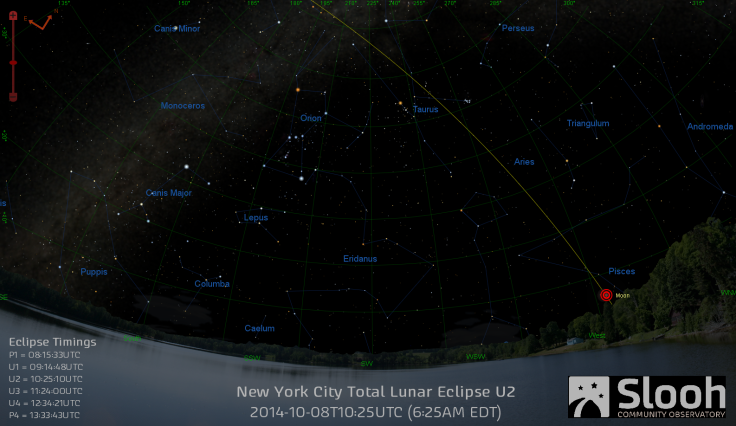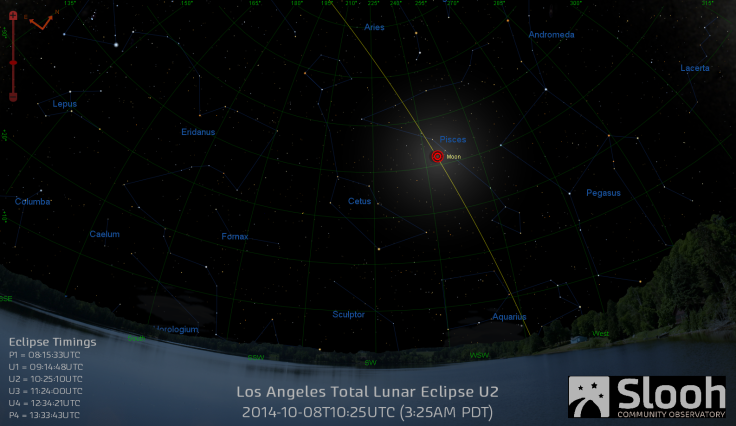Total Lunar Eclipse Live Stream: Watch The October 'Blood Moon' Here [VIDEO]

Early risers on Wednesday are in for quite the astronomical treat and will be greeted by a total lunar eclipse. The "blood moon" will reach totality at 6:25 a.m. EDT and will be visible across North America as well as India, Asia and Australia. NASA and Slooh will both provide a total lunar eclipse live stream, the former beginning at 3 a.m. EDT and the alter beginning at 5 a.m. EDT.
The Virtual Telescope Project, beginning at 6 a.m. EDT, and Columbus State University will also offer blood moon live streams. "A lunar eclipse happens when the Earth casts a shadow that blocks sunlight that normally reflects off of the moon. A total lunar eclipse can only happen when the sun, Earth and moon are perfectly aligned. During the time of total eclipse, the moon will often look reddish due to red and orange light being scattered by the atmosphere. This eerie, harmless effect has earned the tongue-in-cheek nickname 'blood moon,'" NASA explains.

For the U.S., the West Coast will have the best view of the total lunar eclipse, which reaches totality at 6:25 a.m. EDT. On the East Coast, morning risers will need to face the western horizon to see the blood moon. For certain parts of the U.S., the area around the Mississippi River, there is a chance to view the total lunar eclipse and the sun, around 10 to 15 minutes before sunrise, a phenomenon known as the selenelion.

The blood moon will also feature a bit of turquoise, caused by the Earth's ozone layer. “The color of the moon when the eclipse is total delivers an environmental report card about ourselves. If the Moon turns coppery red, that’s normal. But a black totality indicates either major volcanic eruptions on Earth, or rare cloudiness surrounding the limb of our planet. This potential variability provides yet another reason to tune in,” Slooh astronomer Bob Berman said in a statement.
Slooh's blood moon live stream will feature views from Australia, New Zealand, Japan and other countries and wil include commentary from Berman, Slooh engineer Paul Cox and filmmaker Duncan Copp. The broadcast begins at 5 a.m. EDT and can be viewed below.
NASA's total lunar eclipse live stream includes a Q&A with experts from the space agency, beginning at 3 a.m. EDT.
© Copyright IBTimes 2024. All rights reserved.












